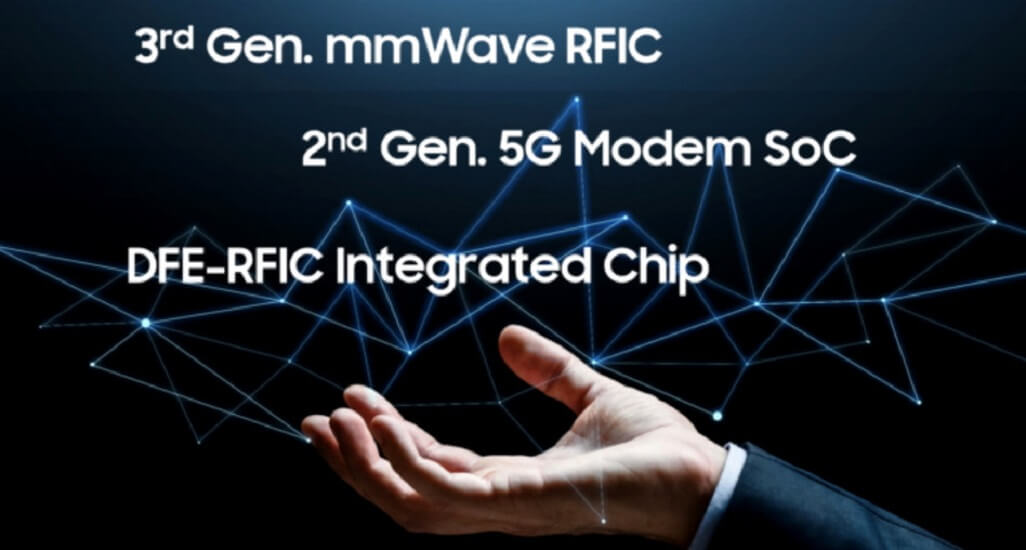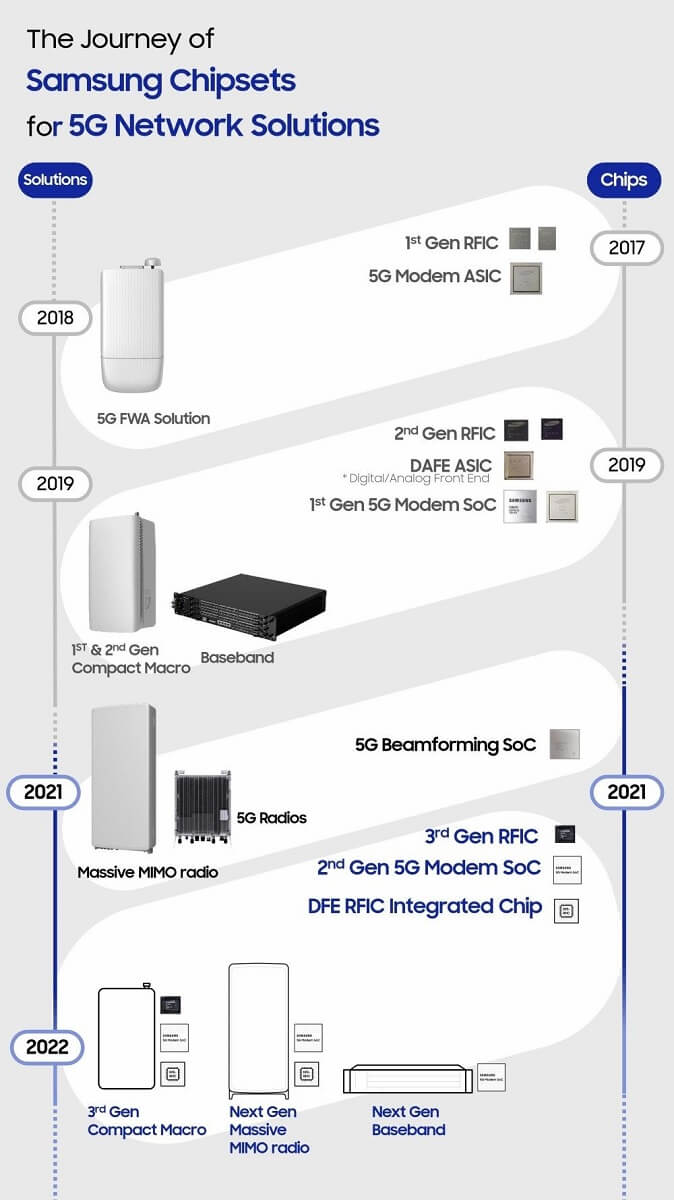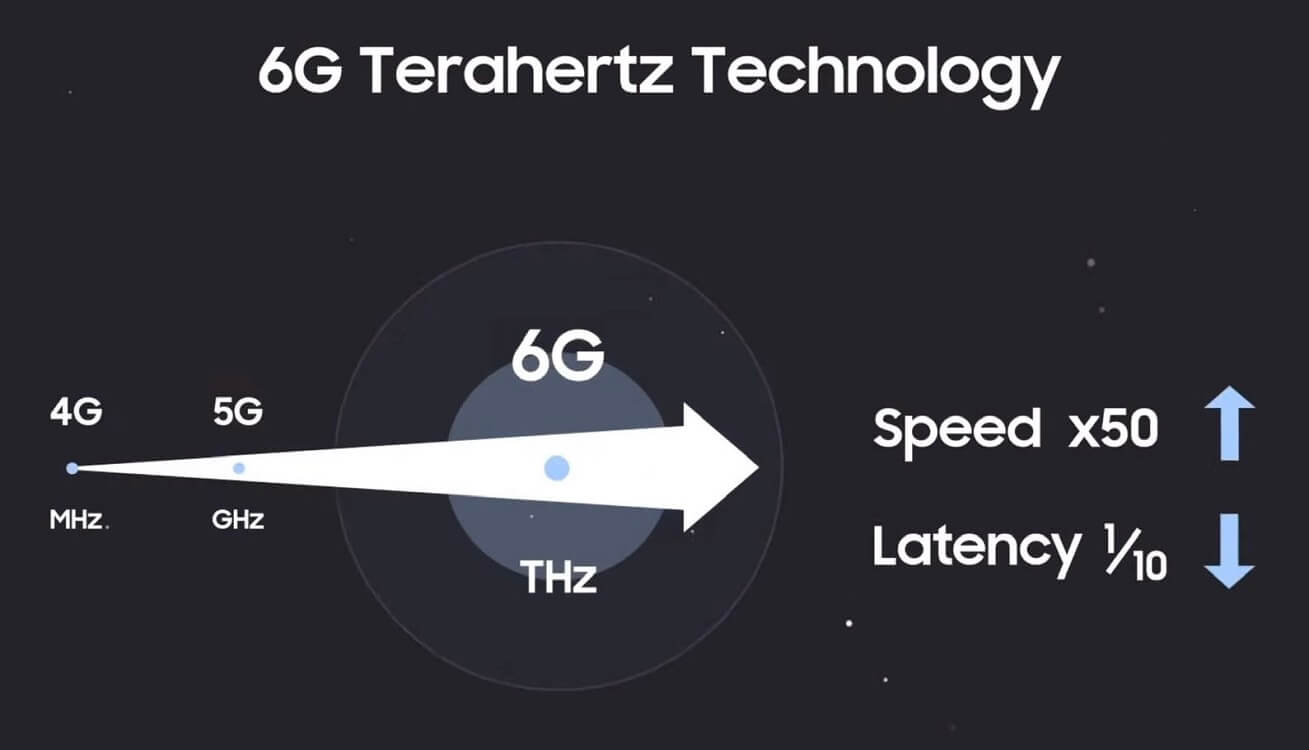Samsung Unveiled New Chipsets for Next-Gen 5G Solution and 5G One Antenna Radio

Samsung has announced its new chipsets that will be used in its next-generation 5G solutions at its Samsung Networks: Redefined virtual event. The new 3GPP Rel.16 compliant chipsets consist of a third-generation mmWave Radio Frequency Integrated Circuit (RFIC) chip, a second-generation 5G modem System-on-Chip (SoC), and a Digital Front End (DFE)-RFIC integrated chip. The company’s latest chips will power Samsung’s next-generation products for 5G build-out, including the next generation 5G Compact Macro, Massive MIMO radios, and baseband units, which will all be commercially available in 2022.

Samsung’s newly-introduced chips are -
- Samsung’s 3rd generation RFIC chip - It supports both 28GHz and 39GHz spectrums and will be embedded in Samsung’s next-generation 5G Compact Macro. The chip incorporates advanced technology that reduces antenna size by nearly 50%, maximizing the 5G radio’s interior space. Moreover, the latest RFIC chip improves power consumption, resulting in a more compact-sized, lightweight 5G radio. Lastly, output power and coverage of the new RFIC chip have increased, doubling the output power of the next generation 5G Compact Macro.
- 2nd Generation 5G Modem SoC - It will enable Samsung’s forthcoming baseband unit to have twice the capacity, while cutting power consumption in half per cell, in comparison to the previous generation. Moreover, supporting both below-6GHz and mmWave spectrums, it offers beamforming and increased power efficiency for Samsung’s next-generation 5G Compact Macro and Massive MIMO radio, while reducing the size for both solutions.
- DFE-RFIC Integrated Chip - It is Combines RFIC and DFE functions for both below-6GHz and mmWave spectrums. Not only doubles frequency bandwidth, but also reduces the size and increases output power for Samsung’s next-generation solutions, including 5G Compact Macro.
Samsung 5G One Antenna Radio -

Samsung also announced its new radio designed to help mobile operators overcome the challenges they face in deploying 5G networks. The new One Antenna Radio features integrated antennas, providing operators with the ability to simplify and speed up 5G installations by consolidating a 3.5GHz Massive MIMO radio with low-band and mid-band passive antennas into a single form factor.

Key benefits of Samsung’s One Antenna Radio are -
- Site Simplification - The streamlined solution uses compact hardware to blend into a municipality’s environment, and reduces cabling and hardware elements to minimize visual impact in dense urban areas.
- Simplified Installation - Deployment is made simple by eliminating the need to install and connect radios and multiple antennas separately, accelerating installation and reducing labor costs.
- OPEX Savings - By requiring less space on sites or towers, and with a smaller footprint, operators can save on expenses, including rental and maintenance costs.
Samsung also said this is an all-in-one radio that will address varied environmental and site demands–easing installation, saving space, and reducing OPEX for operators. The new solution will become part of Samsung’s Radio Access Network (RAN) portfolio in early 2022, initially targeting the European market.
6G Future Vision -

Samsung Networks also shared the vision of 6G technology, and the world it will help create. The company said that led 5G research and development even before 4G deployments, and is already preparing for 6G. Now, the company is set to accelerate 6G innovation, bringing hyper-connected experiences to users. Samsung recently explored the potential of the Terahertz (THz) spectrum application for 6G wireless communications, demonstrating an end-to-end 140GHz wireless link using a fully digital beamforming solution.
| MediaTek Dimensity 2000 4nm Processor will be Introduced in Early 2022 | Mi Watch Revolve Active launched in India at Rs.9,999 with 1.39-inch AMOLED display, SpO2 monitoring, built-in Alexa |















